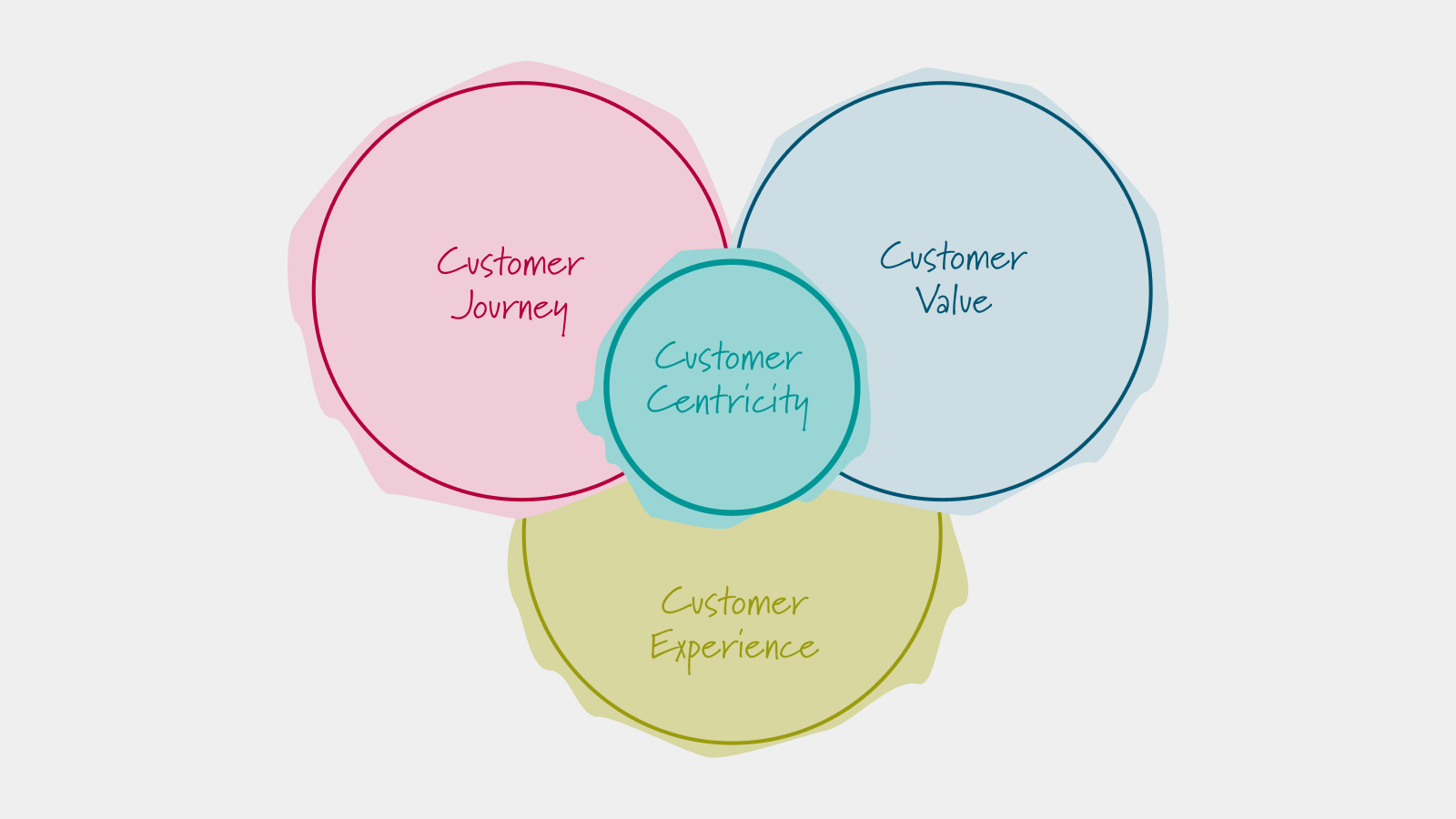
Agile Transformation Processes
A closer look at agile transformation processes

Ognjen Manojlovic
19.1.2021
An introduction to a concept of agile transformation, when to use it and how to approach it
What is an Agile Transformation?
An agile transformation is a process of changing an enterprise, its business model, its organization and the technology serving it in an agile way. Agile transformation mostly takes place in a non-agile environment.
Agility in general means the ability to adapt to a certain context, meaning that an agile transformation enables enterprises to react quickly to internal and external changes in order to remain successful in the long term.
It is important to differentiate agile transformation from agile software development or some of the well-known agile methodologies like Scrum or Safe Agile Framework. Agile transformation refers to applying the ideal of agility to a transformation of an enterprise. On the other hand methodologies like Scrum or SAFe are focused on delivering a certain product or artifact in an agile manner, mostly in the software development process.
If you apply the agility to a transformation of your enterprise, your business model or entire organization, you will probably incrementally iterate yourself to the final goal by exploring, prototyping and designing the final solution while finding the right path to it. You will make mistakes and fail but you will learn from it and perhaps you will go in a completely new direction and explore again until you reach the point where the found solution is satisfying different criteria which you probably set at some point during the transformation. You will create cross-functional teams, enable and empower them and make sure that the technology is one of the major enablers, not only in the case of digital transformation but rather in the case of every transformation. Basically, you will apply all typical agile principles to a transformation process.

We say that the process of an agile transformation can be agile even if the enterprise is not. Why is that and which enterprises should use agile transformation? As already mentioned, the agile transformation makes the most sense in a non-agile environment. Modern young enterprises are founded and operated in an agile manner and are already very fast, flexible and good at transforming while creating disruptive innovations in their field and trying to be noticed and stand out from the competitors. In other words, those enterprises know very well how to work and transform in an agile manner. This is why the agile transformation is more focused on non-agile enterprises which will eventually become agile.
As we all know businesses are changing and the world is digitizing. In order to keep track of competitors, changes are required also in very well-established non-agile enterprises. What do we see in our clients is that it is not always about creating and introducing new products or services in your portfolio. Very often is about continuously changing the whole enterprise - not just a business model but organization or technology. We think that this is a continuous process which in the future will become even more relevant. We also think that it is not going to be sufficient to transform once and create a perfect setup or business model or to create a well-organized enterprise and earn loads of money with it in the end. The enterprises will rather be forced to transform continuously. What we also often see is that many enterprises are not experienced in transforming or even understand why they should do it. Unfortunately, enterprises in many cases figure that out very late.

What is an Enterprise Transformation?
An enterprise transformation refers to changing what an enterprise does and how it does and very often both at the same time. In general, several layers of enterprise can be affected by the change or sometimes all of them. In most cases, it is not possible to change a business model without introducing some organizational changes or improving IT or even complete the transformation of the IT landscape.
The scope of a transformation can be very wide – so basically changing the complete business model will most probably require the transformation of the entire organization as well as the IT which is serving it. In some cases, on the other hand, if you are introducing a new service or product which will require some organizational changes and new technology to support it you will have to implement minor changes. This would be a typical case of a narrow enterprise transformation.
When Should You Use an Agile Transformation Approach?
According to IDC, investment in digital transformation is going to equal $ 2.3 trillion worldwide in 2023, which is twice as much as in 2019.
At the same time, the recent data from McKinsey shows that 3 out of 4 companies have stalled in their digital progress due to internal and external reasons.
Agile transformation processes can be applied to any transformation but we think that those are most useful in an unclear, as we call it, “foggy” situation where you initially do not know what exactly do you want to achieve or how to achieve it.

In such cases agile transformation processes allow a very high level of flexibility to seek for the right content and approach which enables reprioritization, rapid reactions, invention and reinvention until a clear vision of the transformation goal is finally found. In fact, the found goal does not have to be final. It might be the first step in a continuous transformation process as well. On the other hand, it is possible that you have an exact vision of an endeavor and you already know what has to be done and how it should be done. This being the case, agile transformation does not have to be applied because of the straightforward course of action. However, if you apply it you might come to a completely different result in the end. May a better one.
Some recent surveys from Digital.ai show that the most popular reasons for taking an agile approach are to manage changing priorities, accelerate software delivery and increase team productivity.
Key Agile Principles
We think that the following five agile principles are playing a key role in an agile transformation.
- Create shared vision
- Build empowered teams, overcome organizational silos
- Cultivate an agile mindset
- Follow an agile transformation process
- Use modern collaborative tools
Create a Shared Vision
What needs to be considered to make your agile transformation process a success? You may have the best team and still, you will fail if it cannot unite behind a shared vision that defines the why, what, how and who of your transformation. So which aspects need to be addressed to make it a success?:
Why
Even if you do not know exactly what to achieve and how to go about it, it is important to define a common purpose for your transformation: Do you want to improve your performance, provide better services, be more innovative? Having a common purpose empowers teams to make decisions that are aligned with that purpose.
What
Once you have a shared purpose, you need to define the big picture - this will ensure you do not get lost in details at an early stage. Typically the big picture will encompass both your ecosystem of customers, suppliers and regulatory bodies as well as the enterprise architecture. The architecture should account for key processes, structures and data across your business model, organization and technology layers.
How
Regarding how the key thing is to ensure you have an agile transformation process and the necessary collaborative tools in place.
Who
This may be the most important aspect of all: if you involve all stakeholders from an early stage and get the right skills on board, you will manage to overcome the greatest obstacles. In our experience, you need the buy-in of C-Level managers and shareholders. Key skills to have onboard are internal and external domain, business engineers and transformation architects will help you to understand the problem and define a solution and UX Designers and System Engineers will help you to get the job done.
Build an Empowered Team, Overcome Organizational Silos
Organizational Silos
Speaking of the right people who need to be included in your agile transformation project, make sure to integrate all key players across organizational silos in your team.

What are these organizational silos? Organizational silos refer to the differentiation of human resources according to their functional specialization (e.g. the department they work in) and their managerial hierarchy within a company. This means, that you have to bring together key players both horizontally and vertically from across your organizational structure and make them work collaboratively on the big picture that you have created together.
Organizations as Organisms

Most organizations view themselves as "machines" - leading to over-specialization and command and control structures. Rather than seeing your organization or your team as a machine, it might help to perceive your transformation team as a living organism, which can adapt quickly to new challenges and opportunities. This view supports the idea that leadership is responsible for creating a unifying vision, providing guidance and enabling execution. Although leadership has the central position as it shows the direction and enables actions within the company. Although leadership leads the way, hierarchy is less important. Rather than that, the whole organization is focused on execution. The whole system is designed to make quick changes and use flexible resources.
Cultivate an Agile Mindset
In a recent survey by McKinsey 60% of respondents said they were transforming to an agile organization. Their biggest challenge: changing the culture.*

A clear and purposeful cultural aspiration is key to successful transformation. But what are the differences between the traditional and the agile mindset? What needs to be changed, in order to cultivate an agile mindset? Here are some changes that should be considered if you want to integrate an agile mindset into your companies culture:
- Move from being cautious to owning it! This means, instead of playing it safe and avoiding failure, start doing what feels right and start to experiment.
- Stop following only the leaders and start to speak up for yourself. Actively seek diverse perspectives from all across your company.
- Instead of managing and directing by telling people what they have to do and relying on strict rules to organize your teamwork, start trusting others and their way of working. Start empowering and coaching others by using guidelines and answering questions to solve their problems.
- Stop focusing on your own deliverables and aims and start to aim for team success by helping others to perform - be open and transparent and use your time to help others.
Follow an Agile Transformation Process
We think of a transformation process as a creative problem solving and design process starting with a bunch of initial ideas and leading up to the desired outcome where these ideas result in the development of a new business field, business service, new software, etc. The process will move forward from defining the ideas, evaluating them, refining, implementing and finally launching them. But even if it might seem to be straight forward this is not a waterfall process. Each phase of the process will contain at least one and usually a few so-called transformation cycles. In a transformation cycle, your project will seek to reach a small process increment. It will do so by ideating, designing, and implementing small transformation steps in each cycle. As we will see performing the transformation cycles will enable your project to gather valuable feedback from stakeholders regularly and therefore enable your team to learn on the fly what works and what does not work so well within your transformation.
Agile Transformation Phases
We define the following phases in a transformation project: ideate, evaluate, elaborate, implement and launch.

In the ideation phase, the focus is on understanding the current situation, developing the first vision of what shall be achieved and gathering ideas that might lead to the desired outcome of the transformation. The validation phase will allow you to validate and test your ideas and finally decide which to follow on and which to dismiss. Therefore you can use a bunch of techniques and validation approaches e.g. interviewing the stakeholders, crunching the numbers, building prototypes or simulations, etc. Once you have identified which ideas might be worth exploring, you will start to elaborate on these ideas in a more profound way. This might consist of discussing the details you need to achieve in order to accomplish the ideas. These details of course might be on any level- business, organization or technical-whatever suits your process best. Once you have finished defining the details of what shall be achieved you have to start the actual implementation of the transformation. Typical steps in this phase are the development of a solution, preparation for reorganization and launching a new product or training of the workforce. Finally, you will finalize the process by launching your new product or services and by using your new process.
Agile Transformation Cycles
The main idea of an agile transformation is the idea of performing transformation cycles iteratively during the project’s phases. This will allow your team to get feedback quickly on small increments of the transformation project and thus avoid costly mistakes. Transformation cycles should have the same duration - following a so-called - time box principle. By applying time-boxing your project will have a regular rhythm this being a very useful feature especially in large projects where one of the biggest challenges is to keep everybody on track and up to date.
Let us have a closer look into the activities a transformation cycle consists of. A transformation cycle starts with exploration activity followed by design activity and finishes with transformation. Any of the activities might be accompanied and supported by a prototyping activity if needed and useful. During the exploration activity, the project team will analyze the current situation, identify constraints and critical factors for delivering a project increment. During the design activity, the team will define the principles that will guide your design. It will also identify patterns that might help you to find the optimal design and will also identify design alternatives you might follow. The cycle is closed by performing the actual transformation activity. This activity consists of preparing and organizing the actual transformation including communication with the stakeholders and preparing the workforce for the transformation. The prototyping activity might support any of the three activities during the cycle. Here a prototype might be a formal model (e.g. a UML model or process model), a simulation (e.g. table calculation or agent-based simulation) a piece of code, a deployment pipeline, etc.
Aligning Phases And Cycles
The emphasis of the activities within a transformation cycle will vary with regard to the project phase. In the beginning, the emphasis will be rather on exploration and prototyping as you are about to ideate and validate your transformation efforts. The transformation activity will be rather small in this project phase. Further in the project, you will start to put your effort into design and prototyping as you are about to elaborate and implement your transformation agenda. At the end, when your project is about to launch the new software, new service, new business idea, etc. the emphasis will be strongly on transformation activity. As you can see a transformation cycle is not rigid with regard to the duration of the activities it contains - it has to be adapted with regard to the particular needs of the project.

Agile Collaboration
Every transformation process will need the right tools in order to enable your team to work together in the most efficient way.
In order to support collaborative thinking and brainstorming during the project phases, a virtual whiteboard is very useful. The advantage of such a tool are:
- virtual collaborative brainstorming and exchange of ideas
- you can channel the discussions by using predefined templates
- you can share the discussion results easily within the project either via the tool itself or as an export
- you can use the achieved visual result in order to communicate the outcome easily and informally to the stakeholders
Miro is our preferred candidate for this task.
Further in the project, you will have the need to transform the results gained in the informal discussions into a formal architecture model in order to ensure that your ideas are translated correctly and formally correct into the current and desired architecture of your company. In order to create the models for this purpose, you will need to use formal modeling languages with clear semantics. You might use data diagrams to define the current and desired data model, activity diagrams to describe processes, etc. Currently, the Archimate modeling language is a very prominent candidate for a modeling language that enables you to get all the different layers of your company formally and structurally clear in a model. Formal modeling is done at best by using a collaborative enterprise architecture tool like Enterprise Studio BIZZdesign or Sparx Enterprise Architect.
In order to keep track of tasks that have to be accomplished within your project, a collaborative task management tool should be used Jira being one of the best-known tools for task management currently. A task manager will allow you to use a flexible, collaborative ticketing and workflow engine to capture all tasks and channel them in the right direction e.g. by prioritizing them categorizing them or assigning them effort estimation for their accomplishment. Using a task manager will ensure you that nothing is forgotten during the project and will allow you to track the project progress at all times easily.
Table of Contents
Newsletter
Stay up to date about content and events.
Upcoming EventsEvents overview
Upcoming Events
Events overview
Workshops
Resources
All Rights Reserved.


